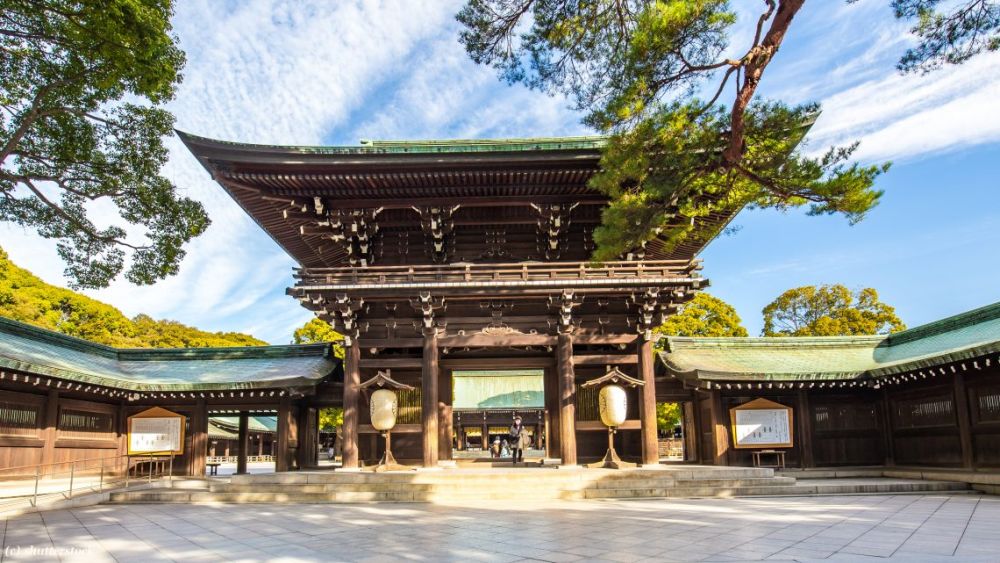

Located in Shibuya, Tokyo, the Meiji Shrine, also known as Meiji Jingu, is a Shinto shrine dedicated to the deified spirits of Emperor Meiji and his consort, Empress Shoken. Inaugurated in 1920, the shrine commemorates the emperor who modernized Japan during the Meiji Restoration.
The Meiji Era, from 1868 to 1912, was a period of significant modernization and westernization for Japan. Emperor Meiji played a pivotal role in transforming Japan from a feudal society to a modern industrial state. After his death in 1912, the Japanese people wished to honor his contributions and thus established the Meiji Shrine.
Construction of the shrine began in 1915 and was completed by 1920, using traditional Nagarezukuri style which is characterized by simplicity and natural materials. Unfortunately, during World War II, the original buildings were destroyed in the Tokyo air raids. In 1958, the shrine was rebuilt to its former glory, thanks to public funding, demonstrating its importance in the hearts of the Japanese people.
Since its inception, Meiji Shrine has been a popular spot for both tourists and locals. Despite the destruction it suffered during World War II, the rebuilt shrine quickly regained its status as a must-see destination for visitors to Tokyo. It provides a tranquil escape from the urban environment and an opportunity to experience traditional Japanese culture.
Meiji Shrine attracts millions of visitors each year, including on January 1st for the traditional New Year's prayers, known as Hatsumode. Additionally, it is a favored site for traditional Shinto weddings and seasonal festivals. On November 3rd, Shinto's harvest festival, Niiname-sai, is celebrated, and the shrine's precincts come alive with cultural activities and food stalls.
In recent years, Meiji Shrine has embraced the digital age, offering virtual tours and online experiences, which have grown in popularity due to the global pandemic. Furthermore, sustainable and respectful tourism is being promoted to preserve the shrine's sanctity and its surrounding forest, which consists of around 100,000 trees donated from across Japan at the shrine’s creation.
The shrine’s forest and gardens are a significant attraction. Visitors can enjoy the lush Yoyogi Park that surrounds the shrine grounds, providing a habitat for numerous plant and bird species. The Inner Garden, known as Meiji Jingu Gyoen, is particularly famous for its irises, which bloom in June, drawing crowds who wish to see the serene beauty of these flowers against the backdrop of this historical location.
Meiji Shrine's central location in Tokyo, near Harajuku Station and Yoyogi Station, makes it highly accessible to tourists. Its proximity to other attractions, such as Takeshita Street and Omotesando, offers visitors a diverse experience, juxtaposing the calm of the shrine with the vibrant Tokyo streets. This easy access has contributed to Meiji Shrine becoming one of Tokyo’s prime attractions for international tourists and local visitors alike.
Throughout its history, Meiji Shrine has stood as a symbol of Japan's past and present. Its ongoing appeal lies in its spiritual significance, cultural events, and natural beauty, all of which continue to make the shrine a cornerstone of tourism in Tokyo.